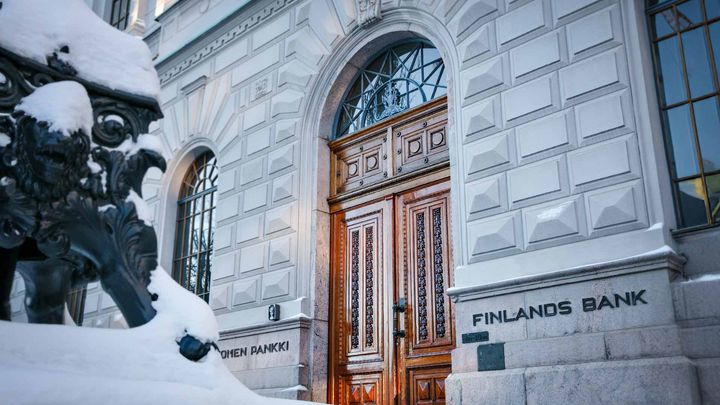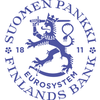Finland’s long-term growth squeezed by demographic change and weak productivity
The Bank of Finland’s long-term forecast shows that population ageing and low productivity growth will weaken Finland’s economic growth and fiscal sustainability. In the baseline scenario, the rate of growth in gross domestic product (GDP) will be at its highest in the 2030s, averaging 1.8% annually. Without additional investment in education, in attracting foreign talent and in fixed capital involving new technologies, the growth outlook for Finland’s economy will generally be weak. A low birth rate will mean a declining number of children to be educated and a gradual erosion of human capital.

Bank of Finland’s long-term forecast has three scenarios for the growth outlook
The Bank of Finland’s long-term forecast for the period 2024–2075 consists of three scenarios concerning the future of Finland’s human capital, fixed capital and GDP. In the no-policy-change scenario, the growth in both human capital and fixed capital comes to a halt and then declines. As a consequence, the GDP is no longer increasing in the 2040s and shrinks from the 2050s onwards. This scenario depicts a situation in which factors driving economic growth are not being supported through additional investment. Annual net immigration is assumed to be 18,000 people throughout much of the forecast period.
In the baseline scenario, the highest GDP growth rate is in the 2030s, averaging 1.8% annually. Growth then slows gradually to just over 0.5% from the 2050s onwards. The scenario assumes that the proportion of 25–34-year-olds who have a higher education degree will rise to 50% by 2035. The assumption for annual net immigration over the long term is 27,000 people. Human capital accumulation will continue until the 2040s, after which the human capital stock will no longer grow. GDP growth will subsequently be reliant on growth in fixed capital.
In the optimistic scenario, average annual GDP growth in the 2030s will be 2%. Growth will then fall to 1.5% in the 2040s and stay at a little over 1% in the years 2050–2075. The scenario assumes that from 2040 onwards, 70% of those aged 25–34 will have a higher education degree. Annual net immigration is assumed to be 40,000 people, in accordance with the population projection of Statistics Finland. The stock of human capital will grow in the 2040s at an average annual rate of close to 1%. The growth will then slow to a rate of just above zero at the start of the 2070s.
Euro & talous article, Bank of Finland’s long-term forecast (in Finnish): Työikäisen väestön supistuminen ja heikko tuottavuus painavat Suomen pitkän ajan kasvunäkymää
Keywords
Contacts
Arto KokkinenSenior Economist
Tel:+358 9 432 5847arto.kokkinen@bof.fiPirkka JalasjokiEconomist
Tel:+358 9 183 2541pirkka.jalasjoki@bof.fiLinks
Bank of Finland
The Bank of Finland is the national monetary authority and central bank of Finland. At the same time, it is also a part of the Eurosystem, which is responsible for monetary policy and other central bank tasks in the euro area and administers use of the world’s second largest currency – the euro.
Alternative languages
Subscribe to releases from Suomen Pankki
Subscribe to all the latest releases from Suomen Pankki by registering your e-mail address below. You can unsubscribe at any time.
Latest releases from Suomen Pankki
Kutsu: Mediabriiffi pankkisääntelyn yksinkertaistamisesta 11.12.202510.12.2025 11:05:53 EET | Kutsu
Tervetuloa Euroopan pankkisääntelyn yksinkertaistamista käsittelevään mediabriiffiin torstaina 11.12.2025 klo 14.00. Tilaisuus järjestetään kokonaan Teamsissä. Suomen Pankin pääjohtaja Olli Rehn käy tilaisuudessa läpi Euroopan keskuspankin korkean tason työryhmän Euroopan komissiolle laatimia suosituksia, jotka koskevat pankkien sääntelyn yksinkertaistamista. EKP julkaisee työryhmän suositukset torstaina 11.12. Pääjohtaja Rehn on työryhmän jäsen ja käy tilaisuudessa suosituksia läpi EU:n ja myös Suomen näkökulmasta. Median edustajien on mahdollista esittää tilaisuudessa kysymyksiä. Pyydämme tilaisuuteen osallistuvia median edustajia ystävällisesti ilmoittautumaan viimeistään torstaina 11.12.2025 klo 10 tämän linkin kautta: Ilmoittaudu tilaisuuteen Ilmoittautuneille toimittajille lähetetään osallistumislinkki.
Med kort betalas mer än tidigare i virtuella betalterminaler och med mobilapplikationer10.12.2025 10:00:00 EET | Pressmeddelande
Under det första halvåret 2025 gjordes fler kortbetalningar som initierats via en mobilapplikation än tidigare, till ett värde av sammanlagt 8,1 miljarder euro. En större andel kortbetalningar görs i virtuella betalterminaler samtidigt som andelen betalningar i fysiska betalterminaler har minskat.
Kortilla maksetaan aiempaa enemmän virtuaalisilla maksupäätteillä ja mobiilisovellusten kautta10.12.2025 10:00:00 EET | Tiedote
Vuoden 2025 ensimmäisellä puoliskolla tehtiin aiempaa enemmän mobiilisovelluksella käynnistettyjä korttimaksuja, yhteensä 8,1 mrd. euron arvosta. Aiempaa suurempi osa korttimaksuista tehdään virtuaalisilla maksupäätteillä samalla kun fyysisillä maksupäätteillä tehtyjen maksujen osuus on pienentynyt.
Card payments increasingly made via virtual terminals and mobile applications10.12.2025 10:00:00 EET | Press release
Card payments initiated in mobile applications increased in the first half of 2025, reaching a total value of EUR 8.1 billion. A growing share of card payments is now made via virtual terminals, while the share of payments at physical terminals has declined.
År 2025 beviljade övriga finansinstitut mer företagslån jämfört med året innan4.12.2025 10:00:00 EET | Pressmeddelande
Nya företagslån utbetalades både under det tredje kvartalet 2025 och från början av året fram till september betydligt mer än ett år tidigare. År 2024 utbetalades sparsamt med företagslån från övriga finansinstitut.
In our pressroom you can read all our latest releases, find our press contacts, images, documents and other relevant information about us.
Visit our pressroom